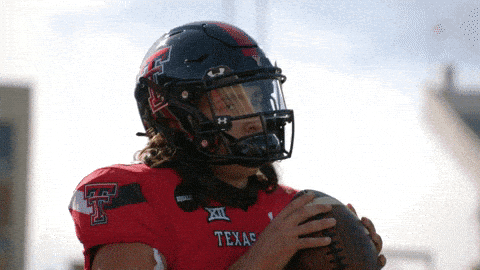- NIL Playbook
- Posts
- 💥Texas Tech’s $55M Shift Just Changed College Sports Forever
💥Texas Tech’s $55M Shift Just Changed College Sports Forever
Hey Playmakers —
The NIL Arms Race Just Got Real.
Texas Tech just made a power move that could reshape college sports as we know it—merging its booster club and NIL collective into one unified force. Why? To stay ahead in the new era of athlete pay, direct compensation, and full-blown roster free agency.
They’re not just talking millions—they’re allocating $55 million across scholarships and NIL, putting them in the same financial conversation as pro teams.
And that’s just the beginning.
This week, we break down:
What the House v. NCAA settlement really means for athletes
Why Texas Tech’s strategy could become the new standard
What you must do now to stay competitive in this fast-changing NIL landscape
Let’s dive in 👇
Breaking News
Texas Tech Merges Booster & NIL Collective in Bold Move
What’s happening: Texas Tech Athletics has merged its booster club (Red Raider Club) and its NIL collective (Matador Club) to optimize funding under the new House v NCAA settlement rules. They’re targeting $14 million annually for NIL and aiming to spend a combined $55 million on athletes—a sum rivaling pro franchises like the Oakland A’s and San Jose Sharks. (More)

Settlement Shifts the NIL & Transfer Landscape
Several interconnected changes ramping up college athletics:
Direct payments begin July 1, 2025 – Each Division I school can allocate up to $20.5 million in direct athlete compensation, capped under the settlement.(More)
Mandatory NIL disclosure/reporting – All third-party deals over $600 must be disclosed to a Deloitte-run clearinghouse for fair‑market‑value compliance (More).
Roster protections – Current rostered athletes are shielded from cuts due to NIL/pay inducements; high school commits and cut athletes also gain similar protections (More).
Why It Matters for Athletes & Coaches
For Athletes:
Increased earnings: Schools can directly pay athletes on top of third‑party NIL deals—potentially elevating total NIL income significantly.
Equity concerns: Spending tends to favor revenue-generating sports like football and men’s basketball. Women’s programs may lag unless proactively supported. (More)
Greater transparency: Must disclose deals for NCAA oversight—raising compliance bar and reducing unreported brokered agreements.

For Coaches & Programs:
Recruiting evolves: Bigger schools with unified funding (like Texas Tech) may gain advantage in the portal era—posing strategic challenges for mid‑majors.
Integrator roles grow: Athletic departments must coordinate media, boosters, collectives, and compliance—a new layer of operational complexity.
Program stability threatened: The convergence of portal freedom and high earning potential may continue fueling roster turnover and disrupt team building. (More)
Broader Context & Trends
State-level integration: Texas passed HB126, allowing direct institutional NIL payments beginning September 2025, already influencing regional norms. (More)
Coaches in limbo: NCAA authority under review; clear, timely guidance needed. As Bill Belichick recently put it: “Tell me what the rules are and then we’ll play by them.” (More)
Gender equity spotlighted: Key stories like NiJaree Canady’s $1+ million softball deal at Texas Tech highlight promise—but also contrast disparities in resource allocation. (More)

Key Takeaways
The House settlement is fundamentally changing the NCAA landscape: direct pay + revenue share + portal protections.
Texas Tech’s integration model is likely a blueprint — expect more schools to consolidate booster/NIL collectives.
Success in the new era demands financial strategy, operational alignment, transparency, and strong equity frameworks.
Weekly Playbook
What Caitlin Clark Did That Most Athletes Miss
When Caitlin Clark broke scoring records and filled NBA-sized arenas, it wasn’t just her jumper that made her millions.
It was her brand.

While most athletes ride the wave of hype until graduation, Clark turned herself into the main event. NIL deals didn’t chase the stats—they chased her story, told over and over through intentional content, media control, and platform leverage.
She didn’t wait for ESPN to notice her.
She became her own ESPN.
Most athletes think a brand is something you “get” after you go pro.
Wrong.
You build it before the league.
You build it daily with content that carries your values, not just your highlights.
You build it with searchability, clarity, and storytelling so brands and fans know exactly who you are and what you stand for.

Caitlin followed the Commandments:
✔️ You're a media company with a jersey on.
✔️ Make your name searchable.
✔️ Build a platform, not just a presence.
And now?
Her jersey changes.
Her platform doesn’t.
Here’s the hard truth:
If you're only posting game-day clips and reposting team graphics… you're just noise in a crowded feed.
But when you build your brand the right way—starting now—you stop chasing attention and start commanding it.

Athletes like Clark are proof:
You don’t wait to go viral.
You design your brand to become inevitable.
Want to know how she did it?
Not with luck.
With a playbook.
The NIL Playbook Premium breaks down the exact systems top athletes use to grow their brands without breaking compliance.
No fluff. Just brand-building that prints opportunities long after the buzzer sounds.
Until next time,
— Justin, NIL Specialist
Don’t gate keep! Share the NIL Playbook.
Know an athlete, parent, or coach who would enjoy our content? Share with them today!
“Your brand is not what you say it is — it's what they say it is.”